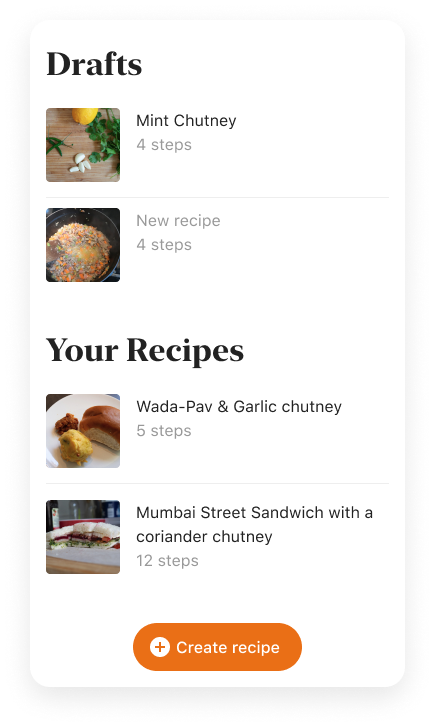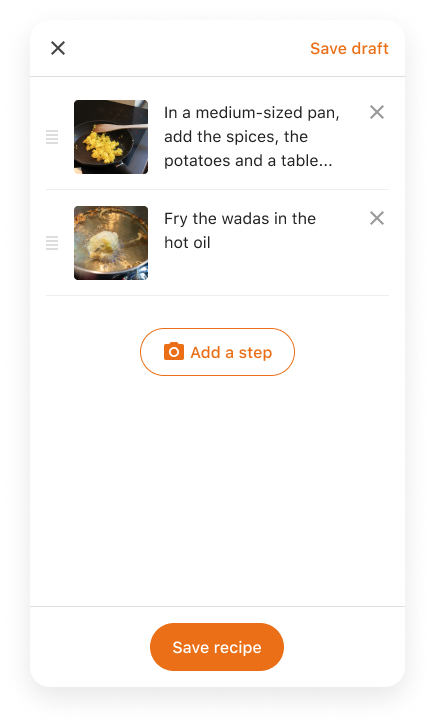Rethinking the Kitchen Notebook
About
Kitchen notes is a personal project that originated from a problem I was facing in the kitchen. I spend a lot of time learning new recipes and iterating on the ones that I like. I usually write my recipes on paper. I wanted to build a tool that helps me save recipes while I cook. I also wanted an easy way to read and share recipes with others.
Problems With the Kitchen Notebook
Throughout the ideation process, I identified the problems I wanted to solve with this project. During this time, I wrote down my own experiences with documenting and sharing recipes and asked friends and family about their problems with the same. Here are the issues I set out to solve:
Recording and updating recipes: Writing down recipes while cooking can be a messy situation. Usually, you have your hands busy and multiple time-sensitive tasks to complete. If you pick to write down instructions later, there is a high chance that you forget ingredients or entire steps. I also wanted an easy way to document texture and colour, which are two essential aspects of cooking.
Sharing recipes: I sometimes get asked for recipes. I’ve sent people links, images from my notes and even long WhatsApp messages. I believe that if home cooks could digitise their work, it would help them share recipes easily.
Competitive Analysis
To better understand how others solve this problem, I did a competitive analysis of recipe apps (KitchenSotries, CookPad), an app that helps you create instructional videos (Jumprope) and Instagram.
I did this by trying to create recipes on these apps and documenting what worked well and what are the restrictions on each platform.
Explorations
After my initial research and competitive analysis, it was clear that the meat of the problem was the recipe creation flow. I had to design a recipe creation process that was simple, clear and efficient at saving every possible detail.
Once I had a clear idea of the functionality and experience needed, I started making some mockups of the recipe creation flow. Since I didn’t have access to users or co-workers to test with, I did a few feedback sessions with Friends and Family.
Here are some of the ideas I explored:








I soon reached a realisation that static mockups were making it difficult to visualise the solution. So, I paid someone to develop a functional app of this prototype. It was a simple app that let you store recipes locally on your phone. The goal of the app was to help me test my core functionality in the real-world scenario.
The app was beneficial for highlighting problems that I missed with the static mockups (like typing with wet hands). After a few rounds of testing the app myself, I went back to Figma with a list of critical issues that needed fixing.
Iterating on the Prototype
The flow highlighted below is the next version of the app. This was a fun exploratory exercise. I learnt the advantage of having a functional prototype early in the product development process.



